I give pride of placement first to some cheder yingelach. This one is from 1901. Some of these may be or certainly are posed, by the way:

Next is a photo I haven't seen of famous Jewish apostate and Masoretic scholar Christian David Ginsburg (1905):

Here is a missionary named J.T. Redensky (evidently Johannes Theodor). This is interesting, because he is reading what looks like a Hebrew periodical of some kind. In fact, it's likely just the title. Unfortunately I can't read the first word, so I'll guess what it says - ישועת ישראל, even thought to my eyes it looks more like חרות ישראל .
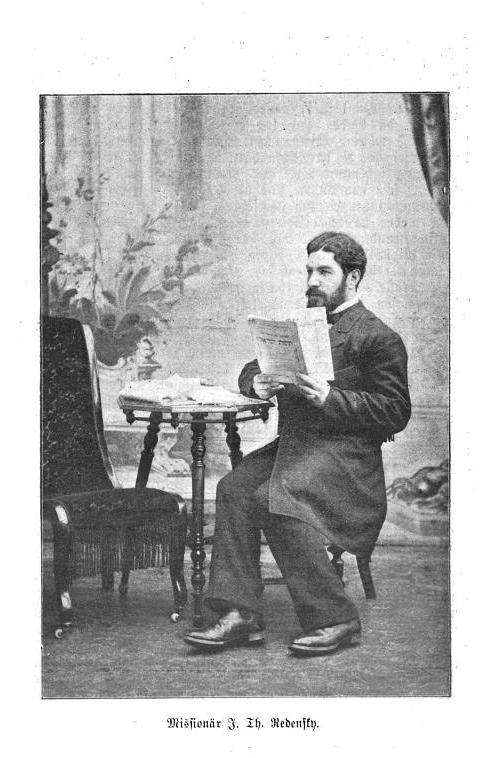
Next is a photo of a missionary couple, which I thought was interesting because of it's "The Lord is my shepherd" inscription in Hebrew:
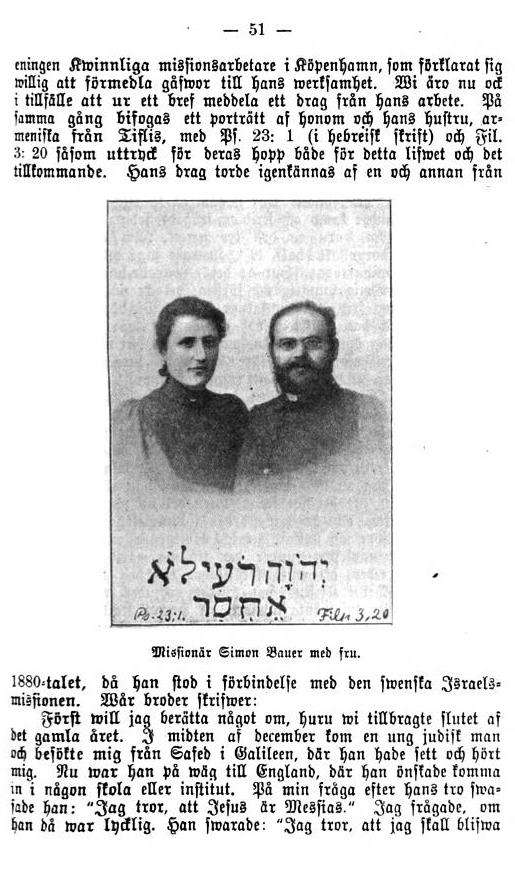
Here are two photos of kapparos being performed:
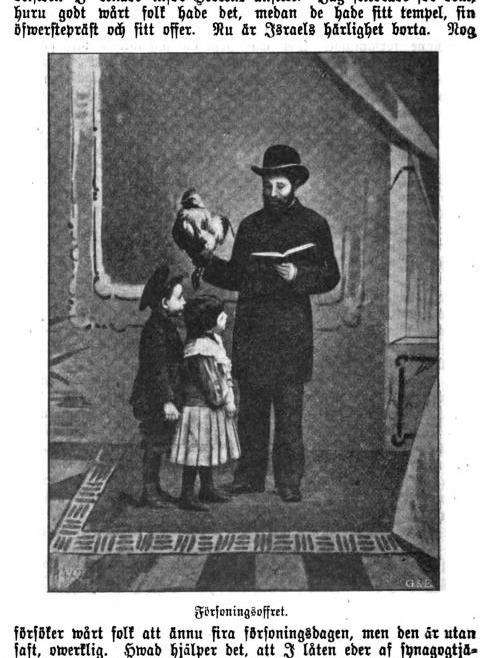

Two photos of Jews, including one captioned Talmudstuderande (from 1897):
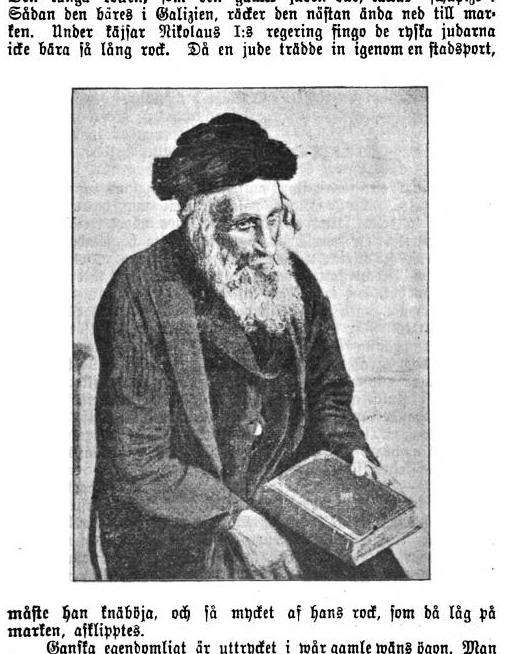
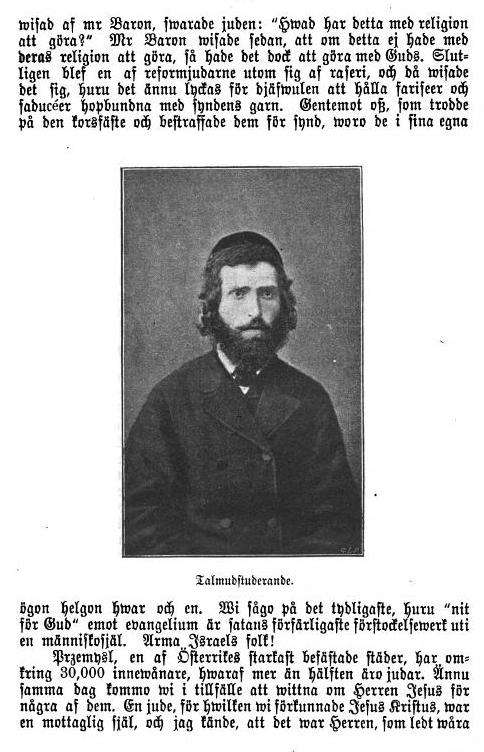
Finally, below is so-called Rabbi Abraham Jacob Schwartzenberg (1862-1843):
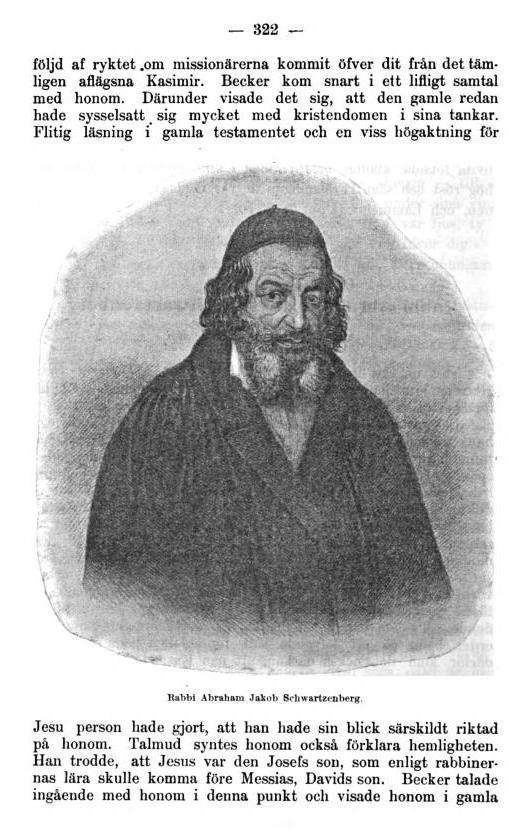
This Rabbi Abraham Jacob Schwartzenberg may well have gone down as Alexander M'Caul's most famous converted Jew if not for certain circumstances propelling Ezekiel Stanislaus Hoga to that position (and he wasn't actually converted or baptized by McCaul, see here). Evidently Schwartzenberg was an actual rabbi in Warsaw, and he converted to Christianity in 1828 after receiving a New Testament from a missionary named F.W. Becker. McCaul, who headed the London Society for Promoting Christianity Amongst the Jews baptized him.
He spent the next 20 years missionizing to fellow Jews - in full traditional dress, which he never ceased wearing. He is quoted as giving the following reason for retaining his dress and living among Jews: "The Jews often think that persons are baptized in order to escape reproach, or to live in Christian quarters of the city, or to walk in the "Saxon Garden" (from which then Polish Jews were excluded), but I will show them that none of these things move me. I am a Jew still - formerly I was an unbelieving Jew, but now I am a believing Jew, and, whatever inconvenience or reproach may result, I wish to bear it with my brethren." — who thought he was mad, of course.
In fact, such tropes appear quite often in the history of conversions. A Jew converts, other Jews say he or she did it for material gain and not conviction. In no few cases this could be proven. Still, in others it was undoubtedly out of conviction, and evidently Schwartzenberg desired to prove that was so in his own case. Elisheva Carlebach points out that the Jewish apostate Giulio Morosini (formerly known as Samuel Nahmias) describes his family's wealth and influence in his דרך אמונה Via della fede: mostrata à gli ebrei (1683), in order to silence Jewish critics that say he converted for financial gain (Pursuit of Heresy pg. 241).
Here is how Schwartzenberg's death is described:

This is interesting, because it records the contention that Jews typically claimed that apostates repented, or at least recanted, before death. Although we have solid evidence that Stanislaw Hoga did indeed recant many years before he died, the legends about him have him repenting when he was close to death. For more on that see my posts, but even more importantly, read The Baal Teshuvah and the Emden-Eibeschuetz Controversy by Dr. Shnayer Leiman, or listen to his lecture The Meshumad, which is based on his essay. Also see Stanislaus Hoga—Apostate and Penitent by Beth-Zion Lask Abrahams JHSE 15.
Naturally there are other interesting pictures scattered through the volumes of the Missions-tidning för Israel and you can browse them yourselves here.

Nice post. The kappores pictures might be taken from popular postcards.
ReplyDeleteInteresting that there would be a missionary journal, in Swedish, in this era. There couldn't have been more than a few thousand Jews in Sweden at the turn of the century.
ReplyDeleteI don't think it was about missionising Jews in Sweden, rather Swedish missionaries went to Eastern Europe, as other Swedish missionaries went to Africa or Polynesia.
ReplyDeleteThanks for all of your hard work. I really appreciate your blog and the new discoveries you share with others. I can relate to that.
ReplyDeleteI have linked your blog (several times) to my rather outdated html site which when I get some spare time I intend to update with RSS and the trimmings.
I have a decade-long interest in the Hebrew writings of Jewish believers in Jesus, "apostates," or however you want to refer to them on multiple levels. Psychologically, I can't fathom the isolation they must have felt in leaving their communities behind for change due in belief system. The closest I can think of was 20 years ago, I knew a family in San Diego who was helping out some Saudi university students who had become "born-again Christians." Their well-to-do Saudi parents had disowned them entirely to fend for themselves.
Anyways, the interesting tidbits are probably only a morsel on what's out there in the Scandinavian language Jewish missionary journals (I know there also exist Danish and Norwegian Jewish missionary publications to complement the Swedish periodical you reference).
A couple of things to share:
You still haven't reviewed the the only Hebrew regular language periodical of the 19th century put out by Jewish converts: namely: עדות לישראל by the really strange, but historically fascinating, Christian Theophilus Lucky, the Christian pen-name for the Galacian* Jewish convert, Hayim Yedidiah Pollak. It is an earlier example of an American Hebrew periodical that was published in NY in the late 19th century. (*Not to be confused with that region of Spain, I say this because I'm a non-Jewish Latino.)
Related to this: I recently posted a boatload of Hebrew commentaries on books of the NT by Biesenthal, the giant of 19th century Jewish converts. Do a search on archive.org (Google Books wanna-be competition) for "biesenthal" and you'll see what I'm talking about.
To end: my apologies, I don't include links for fear that I get censored and because you can also look up the information I mention with a simple search (probably within the first 10 or 20 search hits).
I hope you continue to keep on blogging and I look forward to the next Jewish missionary entry! Kudos to your discoveries.
To the blog writer:
ReplyDeleteI checked a reference I had found several years ago for an article I wrote on Alexander McCaul (I can email it to you if you want if you haven't read it). For the reference, see:
http://www.bodley.ox.ac.uk/dept/scwmss/wmss/online/single-items/miscellaneous/miscellaneous.html
I thought your reference to Schwartzenberg was related to another rabbi related to McCaul (do a search for "G.F. Schwartz, a Jew who converted to Christianity, 1845" in the link above). Maybe I'm wrong. Can you look into this?
The material above was a collection of stuff that the Bodleian Library in Oxford had bought in an auction. It was primary sources related to the London Jews Society and McCaul.
From my article on McCaul entitled "The Doyen of 19th Century British Jewish Missions" (Mishkan 43 (2005), pp. 75-43)
ReplyDelete"McCaul was such a Hebrew-phile [19] that he was teaching Hebrew to his children before the age of five, perhaps following the tradition of how Hasidim also taught Hebrew to their sons (not daughters) at an early age. Later in life he even wrote a Hebrew primer for children. [20] Finn states that at the age of three, she was being tutored in Hebrew by a rabbi… named Avrohom. [21]"
Footnote [21] is "Elizabeth Anne McCaul Finn, Reminiscences of Mrs. Finn (London: Marshall, Morgan & Scot, 1929), pp. 10-11.
I pretty sure your "Rabbi Abraham Jacob Schwartzenberg" is Elizabeth Finn's "Avrohom" she remembered from her childhood. Finn was McCaul's daughter.
This is why I like this subject: the links you make in history alway surprise you.
Based on Jorge's post, I would guess that the periodical in the photo is Edus L'Yisroel. It certainly seems to me that the second word begins with a Lamed.
ReplyDeleteJXG, yes: its Edut LeYisrael or your Ashkenazi Hebrew transliteration of it. I didn't post a photo. It was a Hebrew unicode font. I typed the title in Hebrew.
ReplyDelete